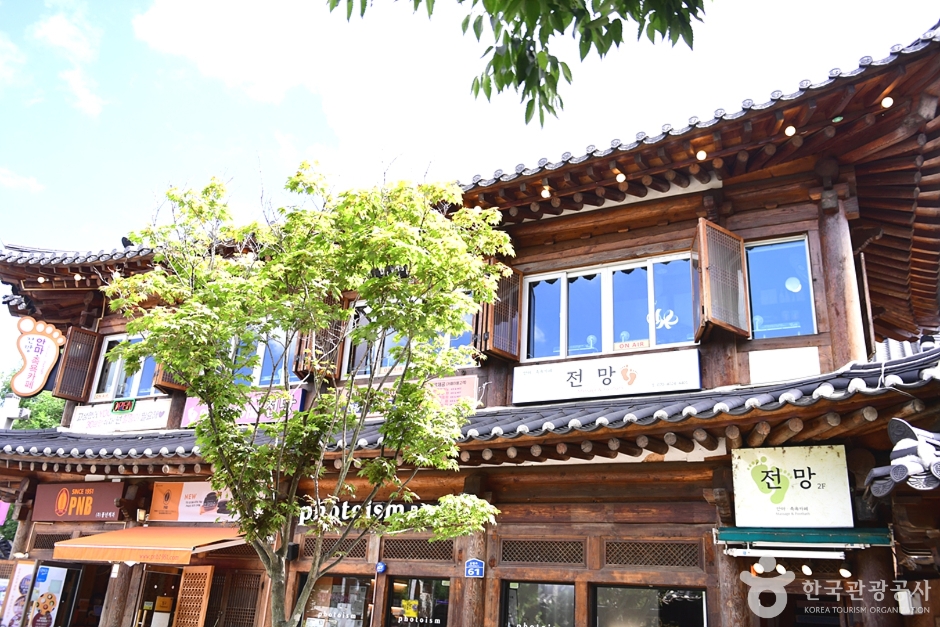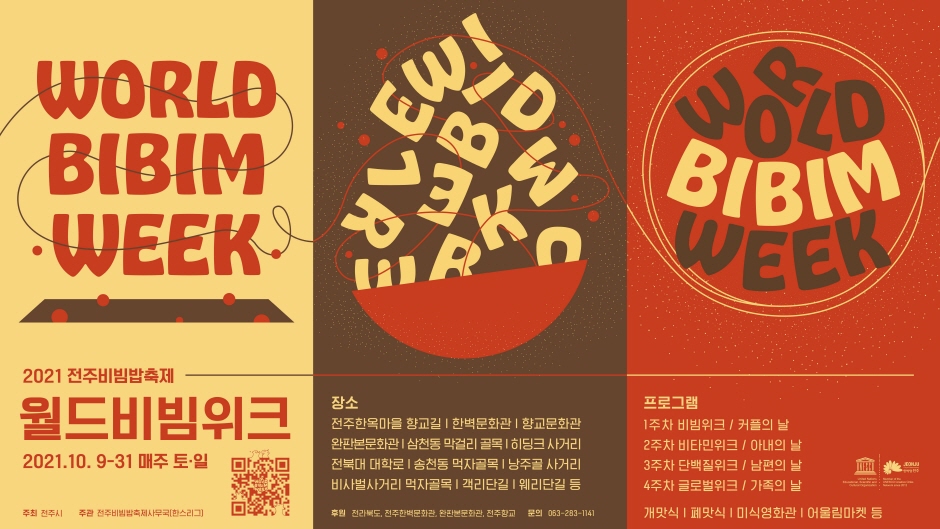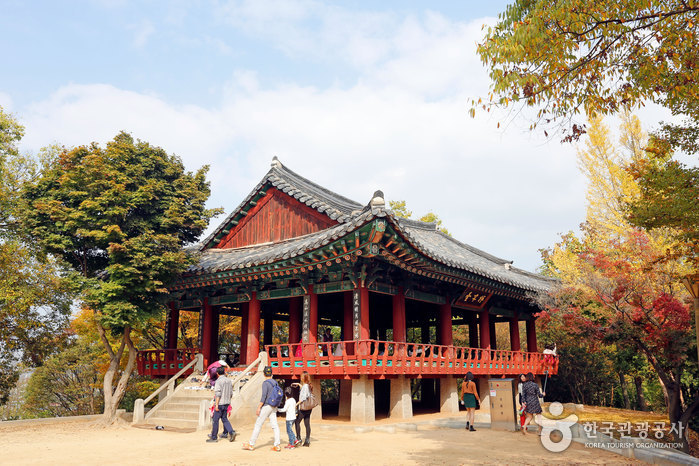Jeonggahanog [Korea Quality] / 정가한옥 [한국관광 품질인증]
203.90596373861933m 176 2024-04-07
78-3 , Girin-daero, Wansan-gu, Jeonju-si, Jeonbuk-do
+82-10-9934-1300, +82-10-3677-1928
Jeongga Hanok, standing right across the road from Jeonju Hanok Village, Jeollabuk-do, is a newbuild hanok combining traditional style with modern comfort. Guestrooms are cypress-walled and red clay-grounded. Thus the Cypress room has walls and ceilings of cypress wood. The Maple room and the Gingko room both have attics. Nearby tourist attractions, which can all be reached on foot, include Gyeonggijeon Hall, Jeondong Cathedral, Jeonju Hyanggyo Confucian School, Jaman Mural Village - and of course Jeonju Hanok Village.
Dokkom [Tax Refund Shop] (도꼼)
204.82017633240247m 0 2024-04-19
14-3, Taejo-ro, Wansan-gu, Jeonju-si, Jeollabuk-do
-
Jeonju hanok house [Korea Quality] / 전주 한옥숙박체험관 [한국관광 품질인증]
213.29502453412601m 1623 2024-04-07
56-1 , Eunhaeng-ro, Wansan-gu, Jeonju-si, Jeonbuk-do
+82-10-8669-6700
Jeonju Hanok stands at the end of a quiet alley off Eunhaeng-ro in the center of Jeonju Hanok Village, and so is a good base for exploring the village. All guest rooms are ondol-heated and have a loft space that’s popular with children. Water purifiers are installed, and a breakfast of toast, fruit and tea or coffee is provided. The outdoor yard has a table where visitors can relax in good weather.
Sky [Korea Quality] / 하늘애 [한국관광 품질인증]
235.92108774618532m 5672 2024-04-07
33-11, Dongmun-gil, Wansan-gu, Jeonju-si, Jeonbuk-do
+82-10-6453-1200
Sky is a guesthouse located in an alley next to the Jeonju Hanok Village Parking Lot. The house was built in 1930 and remodeled in 2014. It was originally a Japanese-style house, but the original building was completely demolished and a traditional Korean house was built in its place. The sheets and blankets in all the guestrooms are embroidered by the owner of the guesthouse. Her embroidery skills make some of the guests choose to stay at this guesthouse since they can learn the trade from her. She offers an embroidery class for such guests for only KRW 4,000 per person, and only 5 people are allowed in the class. If you want, you can also play the traditional Korean game called "yutnori" for free.
Jeonmang Foot Bath Café (안마 족욕 카페 전망)
245.43325021820246m 0 2024-04-07
61 Eunhaeng-ro, Wansan-gu, Jeonju-si, Jeonbuk-do
Jeonmang Foot Bath Café is located inside Jeonju Hanok Village. Visitors can enjoy aromatic foot baths to relieve the fatigue from traveling while enjoying the view of the quaint hanok village. There are a variety of bath bombs, such as aroma, peppermint, and rosemary. The foot bath and shoulder massage come with a free drink and take about 40 minutes.
Jeonju Bibimbap Festival World Bibim Week ( 전주비빔밥축제 월드비빔위크)
246.37281766063876m 40210 2024-04-07
29-13, Gyeonggijeon-gil, Wansan-gu, Jeonju-si, Jeonbuk-do
• 1330 Travel Hotline: +82-2-1330 (Korean, English, Japanese, Chinese) • For more info: +82-63-231-8969
Bibimbap was one of the top three foods during the Joseon period and it is thought to be the most favorite Korean meal among foreigners. In particular, Jeonju bibimbap is considered one of the best foods in Korea. It is a nutritious and healthy food comprised of rice with bean sprouts, one of 10 famous foods in Jeonju. Jeonju's bibimbap is decorated with five colors and with five flavors that come from 30 different ingredients including ginkgo, pine nut, chestnut, walnut and fresh seasonal vegetables. It has a balanced nutrition, packed with carbohydrates, fats, protein, vitamins, and minerals alike. It is considered the perfect food embracing the ancestor’s wisdom and scientific theory.
Jeonju is the center of Korea's delicious cuisine and its representative food is bibimbap. Jeonju Bibimbap Festival is held in the area around Jeonju Hanok Village and Korean Intangible Cultural Heritage Hall.
Ducksugung[Korea Quality] / 전주 한옥마을 덕수궁[한국관광 품질인증]
252.65684100555634m 1 2024-04-07
10 , Gannap-ro, Wansan-gu, Jeonju-si, Jeonbuk-do
+82-10-2625-4336
Deoksugung is a traditional hanok stay situated in a residential area across from the entrance to Jeonju Hanok Village. It has seven rooms for couples and one room for four people, all of which are ondol rooms. Rooms are equipped with a bathroom, a mini-refrigerator, television, and a private parking lot. There is no cooking allowed in the rooms, but you are welcome to prepare simple meals in the shared kitchen. Rentals of hanboks and rail bikes are available at a discount at the hotel.
Jeonju Handicraft Exhibition Hall - Jeonju Hanok Village Branch [Tax Refund Shop] (전주공예품전시관 전주한옥마을)
280.4436558404963m 1 2024-04-19
15, Taejo-ro, Wansan-gu, Jeonju-si, Jeollabuk-do
-
Omokdae and Imokdae Historic Sites (오목대와 이목대)
306.7178680625845m 27949 2024-04-07
55 Girin-daero, Wansan-gu, Jeonju-si, Jeonbuk-do
+82-63-281-2114
Omokdae Historic Site is located on top of a steep hill and is one of the places where Yi Seong-gye, who later became King Taejo, the first king of the Joseon dynasty, stopped to celebrate his victory on his way home from a war against the Japanese army at Unbong Peak of Hwangsan Mountain. Across the bridge from Omokdae is Imokdae Historic Site, situated at the foot of Seungamsan Mountain. Approximately 80 meters downhill from Imokdae are memorial stones and a building where Mokjo, the great-great-grandfather of King Taejo, once used to live. The engraved letters on the stones are the handwritings of Emperor Gojong. Mokjo moved to Hamgyeongdo as a result of a dispute with the then minister of Jeonju, an incident which King Taejo believed to have laid the foundation for him to shape the Joseon dynasty.
Royal Portrait Museum (어진박물관)
323.6930943050038m 19472 2024-04-07
44, Taejo-ro, Wansan-gu, Jeonju-si, Jeonbuk-do
+82- 63-231-0090
Opened on November 6, 2010, the Royal Portrait Museum is one of the newest attractions of Jeonju, located within the Gyeonggijeon Shrine. Royal Portrait Museum is a valuable museum as a new tourism resource of Jeonju as well as Gyeonggijeon Shrine and the Portrait of King Taejo, as well as other various high-class exhibitions to preserve, manage, and enhance the glorious cultural assets of Joseon royal family. The museum is comprised of one above-ground level and one underground level with an area of 1,193.71 square meters. The Portrait of King Taejo and six other king’s portraits (Portrait of King Sejong, King Yeongjo, King Jeongjo, King Cheoljong, King Gojong, and King Sunjong) are exhibited on the first floor. The portraits are preserved in temperature- and humidity-controlled cases. In addition, the museum houses History Hall, Palanquin Hall, a planned exhibition hall, resting area, management office and storage room for relics. Palanquin Hall exhibits Hyangjeong (Palanquin for Incense Burner and Case), Sinyeon (Palanquin for Royal Portrait and Palanquin for Mortuary Tablet), Chaeyeo (Palanquin for High Officials), Gagyo (Palanquin for Ritual Items) featuring Korea’s sole preserved palanquin. History Hall houses approximately 80 relices related to Gyeonggijeon Shrine and Jogyeong Shrine, ancestral ritual ceremony, building, and others relics. Since the museum's opening, it makes continual efforts to become a central place for Jeonju residents to fulfill their cultural feelings. The museum operates various program like exploring famous historic sites in Gyeonggijeon Shrine, hands-on programs such as a guard experience to protect the shrine, and duplicating Gyeonggijeon Shrine’s relics using traditional portrait-making techniques.
![Jeonggahanog [Korea Quality] / 정가한옥 [한국관광 품질인증]](http://tong.visitkorea.or.kr/cms/resource/62/2594362_image2_1.jpg)

![Jeonju hanok house [Korea Quality] / 전주 한옥숙박체험관 [한국관광 품질인증]](http://tong.visitkorea.or.kr/cms/resource/90/2531490_image2_1.jpg)
![Sky [Korea Quality] / 하늘애 [한국관광 품질인증]](http://tong.visitkorea.or.kr/cms/resource/39/2046939_image2_1.jpg)


![Ducksugung[Korea Quality] / 전주 한옥마을 덕수궁[한국관광 품질인증]](http://tong.visitkorea.or.kr/cms/resource/01/2813401_image2_1.jpg)


 English
English
 한국어
한국어 日本語
日本語 中文(简体)
中文(简体) Deutsch
Deutsch Français
Français Español
Español Русский
Русский